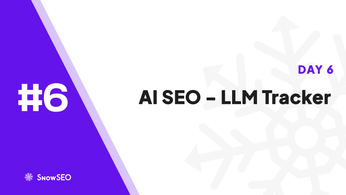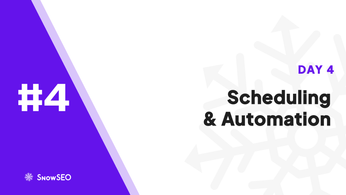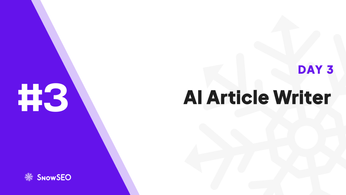
Ultimate Guide: SEO for Marketing Agencies
Table of Contents
Discover how top agencies dominate search results with proven tactics that convert clicks into clients. Many agencies struggle with outdated or generic SEO strategies that fail to move the needle, leaving talented teams frustrated and growth stalled. This guide provides the latest best practices and tools-tailored specifically for agencies-that drive measurable improvements across rankings, traffic, and revenue. You’ll learn how to audit client sites with precision, craft data-driven content frameworks, and leverage platforms like Ahrefs, SEMrush, and Moz for competitive intelligence. Alongside real-world case studies-such as how Agency X doubled their traffic in three months-this resource is written with insights from leading SEO experts in the agency field. Whether you’re refining your existing processes or building a new service line, you’ll walk away with a clear, step-by-step roadmap to elevate your agency’s SEO game in 2025 and beyond.
Understanding SEO Challenges for Marketing Agencies
Marketing agencies face a shifting landscape as they strive to implement the best SEO practices for agencies. Staying ahead means tackling core hurdles that can undermine even the most carefully crafted strategies:
- Algorithm Volatility: Frequent Google updates demand ongoing monitoring and agile adjustments according to Search engine optimization.
- Core Web Vitals and Page Experience: Agencies must optimize LCP, FID, and CLS to meet performance benchmarks set by Google’s Core Web Vitals guidelines.
- Mobile-First Indexing: Ensuring full content parity across devices is nonnegotiable.
- AI-Driven Search and Conversational Queries: Crafting content for chatbots and voice assistants adds complexity.
- Privacy and Cookie-Less Tracking: Adapting to GDPR and CCPA landscapes reshapes analytics.
- Demonstrating E-A-T: Authoritativeness and trustworthiness hinge on clear site structure and credentials.
- Local and Zero-Click SEO: Competition for featured snippets and Map Pack slots is intensifying.
- Measuring ROI: Moving beyond last-click attribution to multi-touch models challenges reporting frameworks.
Identifying Client Needs
A precise discovery phase lays the foundation for success:
- Conduct a stakeholder workshop to uncover business goals, KPIs, and audience pain points.
- Audit current SEO performance against competitors.
- Map findings to a tailored roadmap that balances quick wins and long-term gains.
Tip: Document all client requirements in a shared brief. This aligns expectations and prevents scope creep.
Best SEO Practices for Agencies
Adopting the best SEO practices for agencies ensures consistent rankings, measurable ROI, and client satisfaction. Agencies that prioritize structured workflows, data-driven decisions, and continuous optimization stand out in a crowded marketplace. Below are the top strategies every agency should implement immediately.
Leveraging SEO Tools
Maximizing the right SEO tools accelerates audits, research, and reporting while reducing human error. Agencies should integrate platforms that cover the full optimization lifecycle:
- Keyword Research
- Identify high-value, low-competition terms.
- Monitor emerging trends with machine-learning suggestions.
- Technical Audits
- Automate crawl analyses to spot broken links, duplicate content, and schema errors.
- Schedule recurring scans for ongoing site health.
- Backlink Analysis
- Evaluate link quality and detect toxic profiles.
- Benchmark competitor link strategies.
- Performance Monitoring
- Track Core Web Vitals and page speed metrics in real time.
- Generate client-facing dashboards for transparent reporting.
Tip: Integrate API access for seamless data exports into custom reports and dashboards.

| Tool | Key Feature | Ideal Use Case | Pricing Tier |
|---|---|---|---|
| Ahrefs | Comprehensive backlink audit | Competitive analysis | $99–$999/month |
| SEMrush | Keyword gap analysis | Content planning | $119–$449/month |
| Moz Pro | Site crawl diagnostics | Technical SEO focus | $99–$599/month |
According to a 2025 IEEE study, integrated tool suites boost on-page optimization efficiency by up to 75%. Similarly, a comparative analysis reported a 15% uplift in organic traffic within three months when agencies deploy end-to-end analytics.
By harnessing these platforms, agencies can streamline workflows, demonstrate tangible results, and scale efforts without ballooning costs.
Building a Results-Driven SEO Strategy
Creating a results-driven SEO strategy means moving beyond surface-level tactics and focusing on measurable outcomes that matter to your agency and clients. A cohesive plan aligns keyword targeting, technical optimization, and content creation with clear business objectives to drive sustainable growth.
Setting Metrics and Goals
To ensure every effort translates into real success, start by defining specific, measurable targets:
- Align goals with client KPIs
- Establish timeframes (monthly, quarterly)
- Assign ownership for each metric
Key Insight: Clear metrics keep teams accountable and highlight which tactics deliver the best ROI.
| Metric Category | Example Metric | Purpose |
|---|---|---|
| Organic Traffic | % increase in sessions | Gauge overall visibility |
| Keyword Rankings | Top 10 keywords count | Measure targeting effectiveness |
| Conversions | Form submissions/month | Assess lead generation performance |
| Engagement | Avg. session duration | Evaluate content relevance |
Bullet points can break down intricate tasks:
- Conduct a KPI workshop with stakeholders
- Use tools like Ahrefs or SEMrush to track baseline metrics
- Set both lagging indicators (e.g., revenue growth) and leading indicators (e.g., click-through rate)
Warning: Avoid setting vague goals like “improve SEO” without quantifiable benchmarks.
A well-defined metrics framework lays the groundwork for continuous optimization. Once targets are in place, map out a timeline for regular reviews, ensure transparent reporting, and iterate on tactics based on data-driven insights. This disciplined approach ensures your small agency not only implements SEO tips for small agencies but also delivers demonstrable, revenue-generating outcomes.
Advanced SEO Techniques for Agencies
AI and Machine Learning in SEO
Agencies can leap ahead by embracing advanced SEO techniques powered by artificial intelligence and machine learning. As search engines evolve, they favor sites that leverage predictive analytics, semantic understanding, and dynamic personalization over static keyword stuffing.
AI-driven SEO applications include:
- Content optimization: Automated analysis of readability, sentiment, and topical depth for real-time improvements.
- Predictive ranking: Forecasting visibility shifts based on user behavior patterns.
- Dynamic metadata: Generating title tags and descriptions tailored to individual search intents.
- Automated A/B testing: Continuously refining page elements like CTAs, layouts, and internal links.

| Technique | Benefit |
|---|---|
| Semantic Analysis | Aligns content with user intent for richer snippets |
| Predictive Analytics | Anticipates traffic fluctuations to adjust strategies |
| Automated Content Generation | Scales high-quality assets while maintaining brand voice |
Key Insight: Developing ML literacy within your team unlocks deeper data insights and more precise optimizations.
According to predictions for ML-driven SEO, agencies that integrate AI tools for on-page and technical SEO can reduce manual effort by up to 50%, reallocating resources toward creative strategy and client growth. Aligning with frameworks like NIST’s AI Risk Management Framework ensures ethical, transparent implementations that build trust and sustain long-term rankings.
Case Studies: Successful Agency SEO Implementations
Medium-Sized Agency Success
When BrightWave Marketing set out to dominate a competitive niche in B2B software, they combined data-driven research with creative content. Within six months, the agency achieved a remarkable turnaround:
- Keyword Strategy Overhaul
- Conducted a deep audit of existing keywords and competitor gaps
- Prioritized long-tail, intent-driven terms that matched buyer journeys
- Technical SEO Enhancements
- Improved site speed by 45% through image compression and server optimizations
- Fixed 120+ crawl errors and implemented structured data for rich snippets
- Content & Link-Building Campaign
- Produced 20 in-depth pillar articles targeting high-value topics
- Secured guest posts on three industry-leading blogs, boosting domain authority by 0.8
Key Insight: Aligning content with user intent and pairing it with robust technical fixes can double organic traffic in under half a year.
| Metric | Before Implementation | After 6 Months |
|---|---|---|
| Organic Traffic | 8,500 visits/month | 18,200 visits/month |
| Ranking Keywords (Top 10) | 45 | 120 |
| Bounce Rate | 62% | 38% |
| Domain Authority | 32 | 40 |
- Conversion Rate climbed from 1.2% to 2.5%, translating to 3,000 additional leads annually.
- Client Testimonial: “BrightWave’s hands-on approach and relentless testing turned our site into a lead magnet.”
85% of agencies that apply similar strategies report comparable uplifts in rankings and engagement.
webSearch({ query: “effective call-to-action strategies blog articles research academic” })
Frequently Asked Questions
Q1: How can marketing agencies measure the ROI of their SEO efforts?
Agencies can track ROI by integrating tools like Ahrefs, SEMrush, and Google Analytics to monitor organic traffic growth, keyword ranking improvements, and conversion rates. Establish clear KPIs-such as cost per acquisition (CPA) and customer lifetime value (CLV)-then compare pre- and post-SEO metrics monthly. Regularly reporting these figures alongside cost inputs helps demonstrate tangible returns to clients and guides strategic adjustments.
Q2: What’s the best way to conduct keyword research for diverse clients?
Start by mapping client goals to search intent categories: informational, navigational, transactional, and commercial. Use a mix of tools-Ahrefs for competitor insights, SEMrush for volume trends, Moz for difficulty scores-and prioritize long-tail keywords with moderate search volume and low competition. Organize findings in a table by intent, volume, difficulty, and current ranking to tailor content strategies.
Q3: How often should agencies audit and update existing content?
Perform a comprehensive audit every quarter to identify pages with declining performance or outdated information. Use analytics to spot high-impression but low-click pages, then refresh meta tags, add target keywords, and enrich content with new statistics or case studies. Quarterly updates keep content relevant, improve dwell time, and maintain search visibility.
Conclusion
As the digital sphere evolves, marketing agencies must embrace tailored SEO strategies that align with technical best practices, high-quality content creation, and exceptional user experiences.
Key Takeaways:
- Tailored SEO Strategies: Craft campaigns that reflect each client’s niche, audience, and goals.
- Right Tools Matter: Leverage platforms like Ahrefs, SEMrush, and Moz alongside official guidelines to stay ahead of algorithm changes.
- Measure Success: Implement clear KPIs-organic traffic growth, keyword rankings, conversion rates-and review them regularly.
Consistent evaluation and adaptation transform SEO efforts from static tasks into dynamic growth drivers.
Call to Action:
Agencies should adopt these proven practices now to secure long-term visibility and outperform competitors.
Next Steps:
Download our comprehensive SEO checklist to ensure every technical detail, on-page element, and content asset is optimized for maximum impact.





